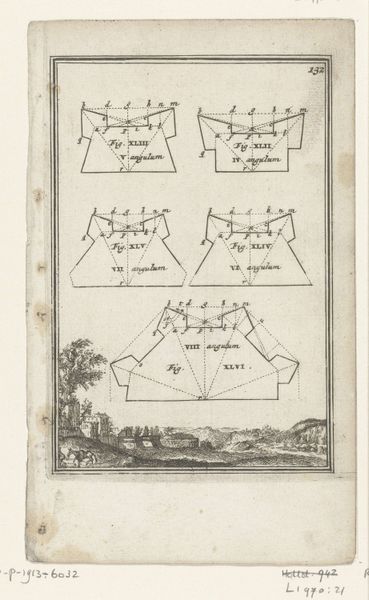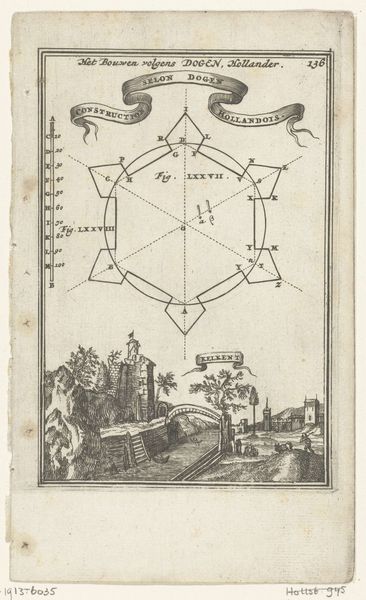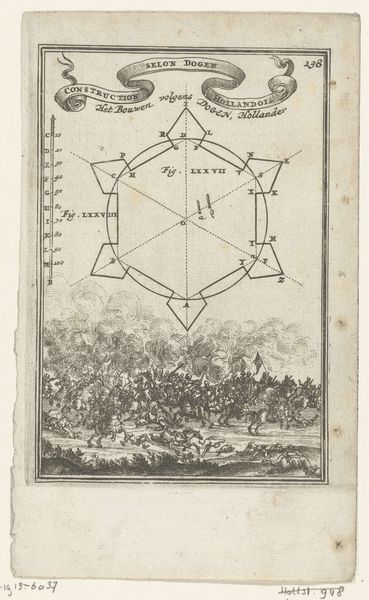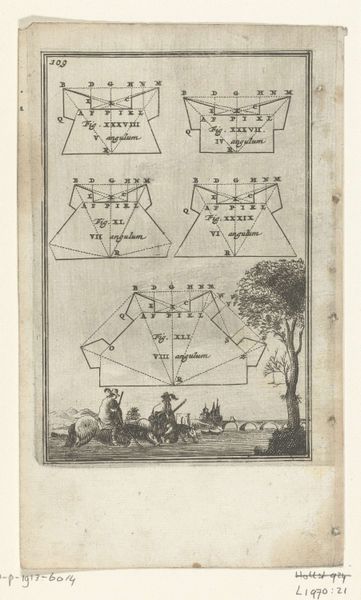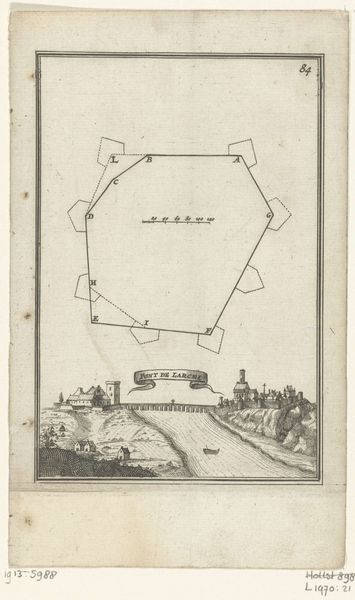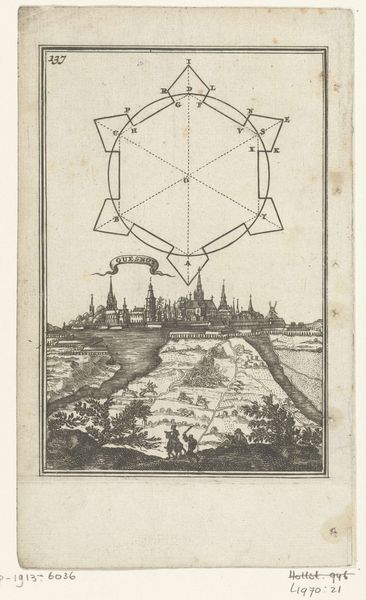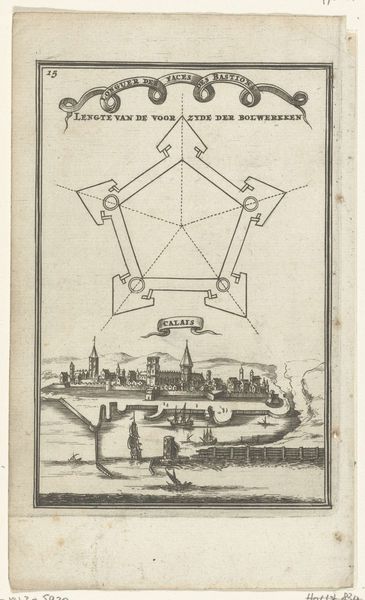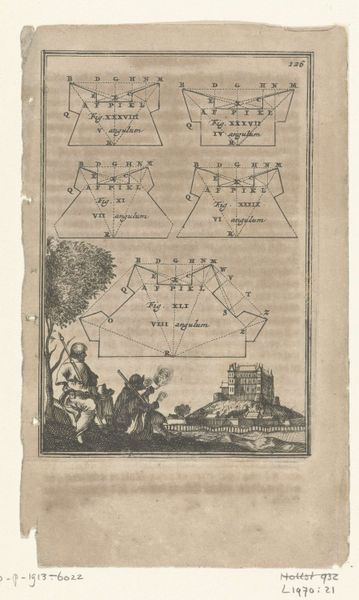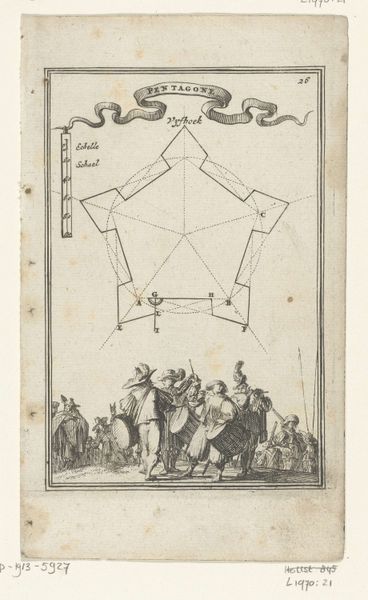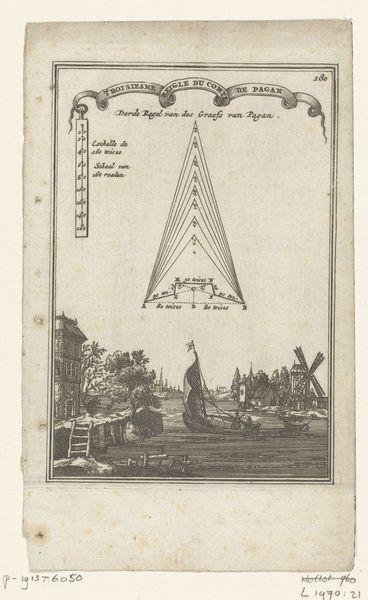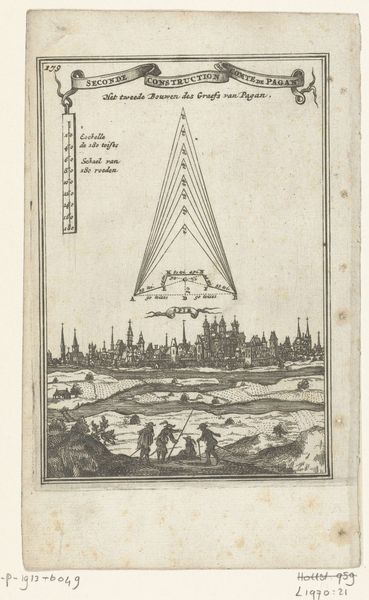
Illustratie voor 'Den Arbeid van Mars' van Allain Manesson Mallet 1672
0:00
0:00
drawing, print, intaglio, engraving, architecture
#
drawing
#
baroque
# print
#
intaglio
#
landscape
#
river
#
perspective
#
engraving
#
architecture
Dimensions: height 185 mm, width 110 mm
Copyright: Rijks Museum: Open Domain
Curator: Here we have an illustration from Allain Manesson Mallet's "Den Arbeid van Mars," created in 1672 by Romeyn de Hooghe. It’s an engraving that seems to combine architectural schematics with a detailed landscape. My initial reaction is to think about the artist’s hand at work, creating such detail through repetitive marks of labor on the printing plate. Editor: I find it fascinating how it merges these seemingly disparate elements: a kind of abstract geometric study placed above a tangible, recognizable scene with a bridge. It speaks volumes about the evolving relationship between science, nature, and human ambition during this period. It's reminiscent of works responding to colonialism where mapping and control become methods of defining territories and exploiting resources. Curator: That connection to colonial aspirations is important. We must look at the materials used to make art at this moment. Engravings like these were crucial for disseminating knowledge and power. Consider the intaglio process: a direct intervention in material creating prints intended to persuade, control and standardize ways of seeing and ultimately ways of building. Editor: Absolutely. And that bridge, the physical manifestation of this knowledge, speaks to the drive to conquer space, to connect, but also to dominate the landscape. How did this vision align with the social structures of the time? The construction, after all, required both vision and labor. Curator: This reminds us that all things were, and continue to be, products of the society around them, and that it requires materials mined and cultivated by work of varying forms of forced and wage labor. De Hooghe’s lines meticulously trace those tensions between mastery and exploitation, progress, and consequence, embedding contemporary theoretical perspectives on power into what appears at first glance as a functional illustration. Editor: Looking closely, the landscape seems both idealized and, well, controlled. Its inherent political messaging aligns it with landscape theory suggesting the imposition of control and ideology. It is not just an image; it's a statement. The perspective lines themselves impose order. It is fascinating how these visual forms shape, and continue to shape our understandings. Curator: So, through the lens of labor and production we witness in intaglio techniques how artistic decisions intertwine with historical context. Editor: Precisely, prompting reflections that transcend visual appeal—extending to the impact of art and materiality on social progress.
Comments
No comments
Be the first to comment and join the conversation on the ultimate creative platform.

